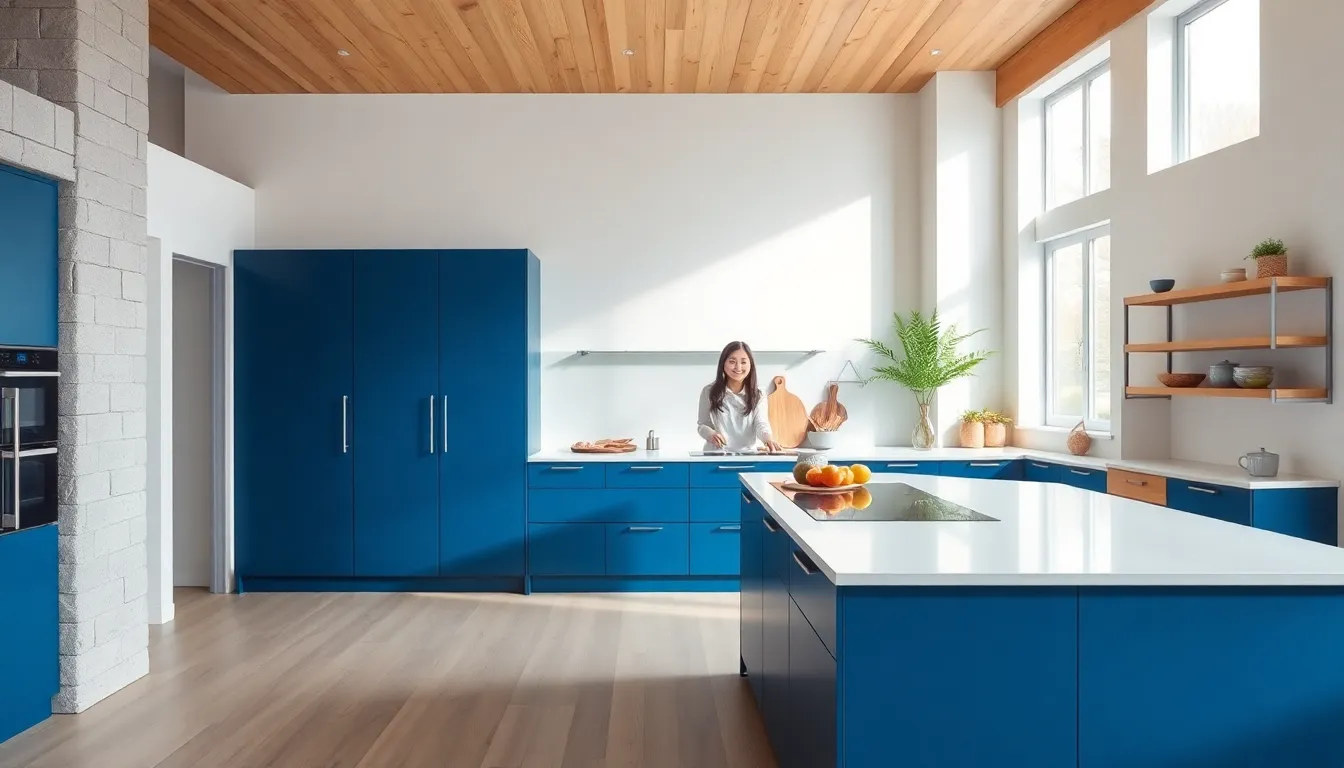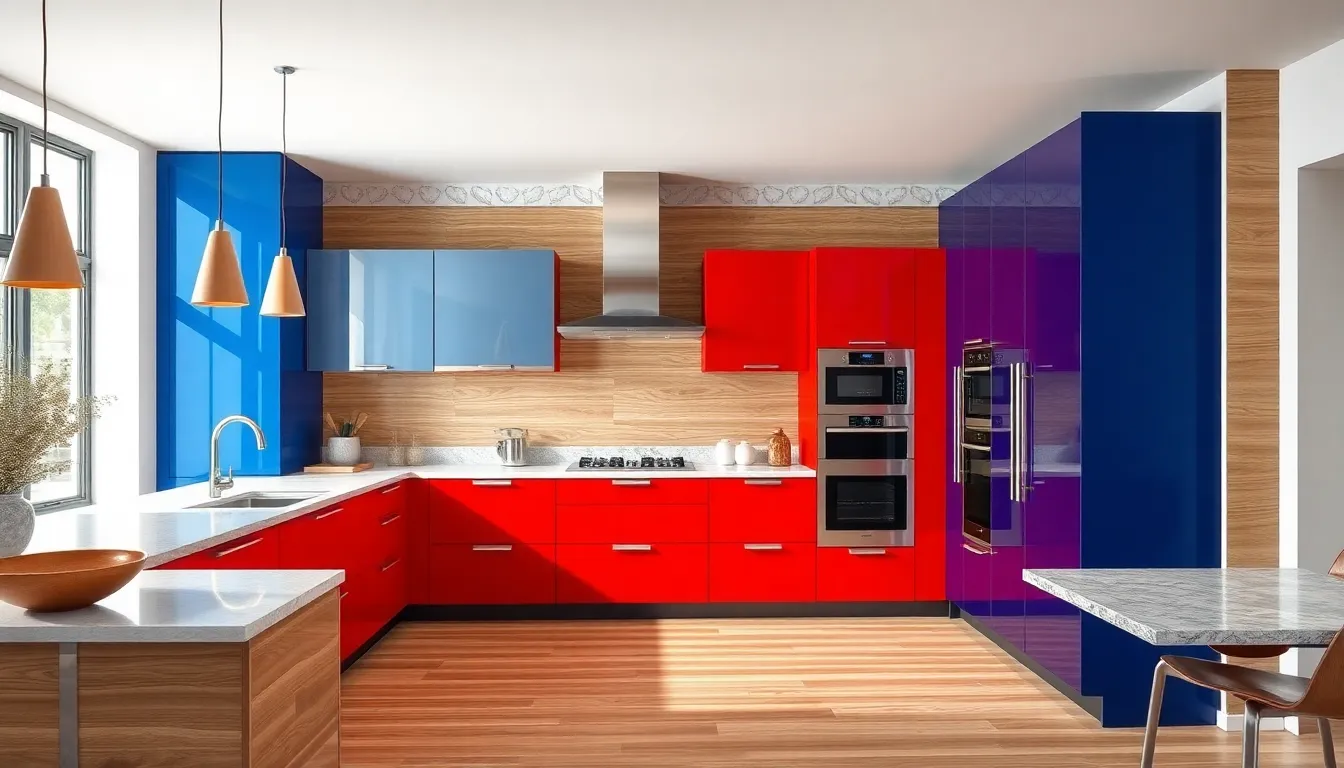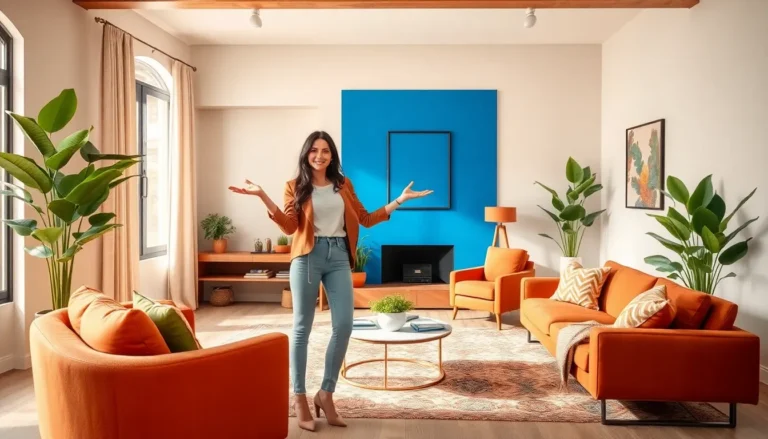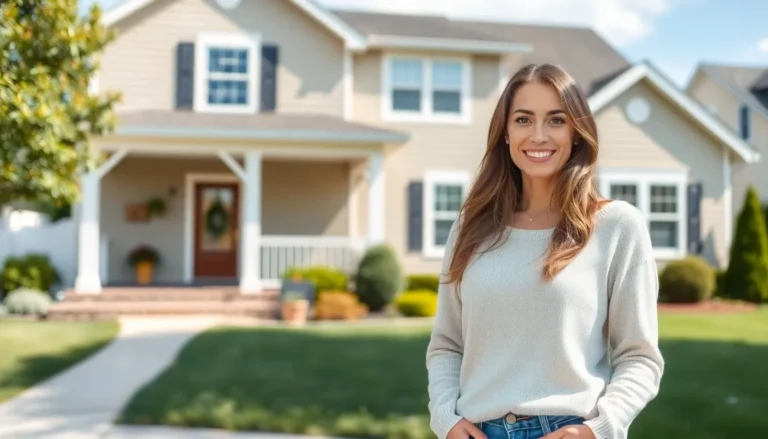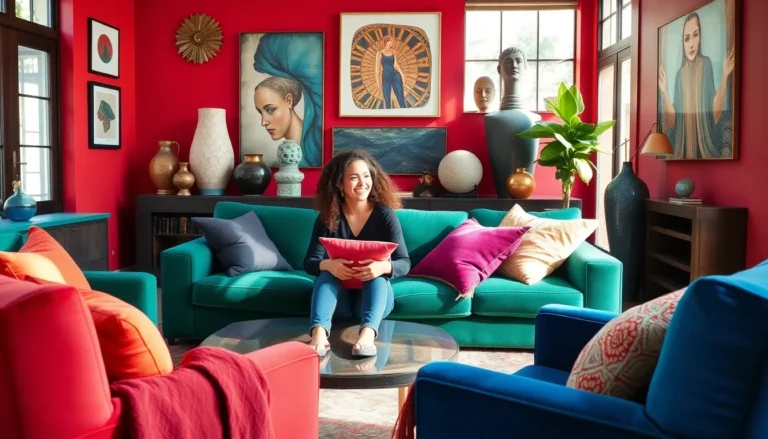Table of Contents
ToggleIn the world of home design, the kitchen is where magic happens—whether it’s whipping up a gourmet meal or just pretending to be a celebrity chef while reheating leftovers. As trends evolve faster than a microwave can beep, staying updated is key to creating a space that’s not only functional but also a feast for the eyes.
Popular Kitchen Design Trends in 2023
Staying updated with current trends enhances kitchen functionality and visual appeal. In 2023, several design trends redefine kitchen spaces.
Open Concept Spaces
Open concept spaces promote an inclusive environment. These layouts eliminate barriers, creating a seamless flow between the kitchen, dining, and living areas. Families and friends can engage easily during gatherings. This design encourages more natural light, enhancing the overall ambiance. Additionally, versatile furniture pieces now fit effortlessly into these spaces, blending functionality with style.
Minimalist Aesthetics
Minimalist aesthetics focus on simplicity and practicality. Clean lines, neutral colors, and clutter-free surfaces dominate this trend. Functionality takes precedence, resulting in essential furnishings that maximize storage. People appreciate the calming effect of minimalist kitchens, where every element serves a purpose. This approach not only elevates visual clarity but also enhances the cooking experience.
Eco-Friendly Materials
Eco-friendly materials gain popularity in kitchen design. Sustainable choices reduce environmental impact while providing long-lasting durability. Recycled wood, bamboo, and low-VOC finishes contribute to healthier indoor air quality. Using these materials supports eco-conscious living and meets consumer demand for sustainable options. Homeowners increasingly choose appliances with energy-efficient features to minimize utility costs and environmental footprint.
Color Schemes for Modern Kitchens
Color schemes serve as significant elements in modern kitchen design, influencing mood and style. Adapting to current trends enhances the kitchen’s aesthetic appeal and functionality.
Bold Accents
Bold color accents create striking focal points within kitchens. Deep blues, vibrant reds, and rich greens draw attention and energize the space. When incorporated into cabinetry or backsplash tiles, these colors provide a dramatic contrast against lighter surfaces. Accessories like bar stools or small appliances in bold hues also make impactful additions, injecting personality into the overall design. Homeowners increasingly choose to combine bold colors with neutral tones, allowing the accents to stand out even more.
Neutral Palettes
Neutral palettes dominate modern kitchen design by establishing a timeless and versatile foundation. Shades of white, gray, and beige create serene backdrops that allow for various design elements to shine. This color scheme aligns with minimalist aesthetics, where simplicity reigns. Texture becomes key, as different materials like wood and stone enhance visual interest while maintaining a cohesive look. Soft pastels are also gaining popularity within neutral palettes, offering gentle color without overwhelming the space. These subtle nuances contribute warmth and elegance, promoting a calm cooking environment.
Innovative Appliances
Innovative appliances shape modern kitchens, enhancing both functionality and aesthetics. These devices integrate technology and sustainable practices to elevate the cooking experience.
Smart Kitchen Technology
Smart kitchen technology streamlines everyday tasks. Devices like smart refrigerators track inventory and suggest recipes based on available ingredients. Voice-activated assistants control cooking appliances, making multitasking easier. Energy monitoring systems optimize usage, helping reduce costs. Smart ovens provide remote access to cooking settings, allowing precise control from anywhere in the house. Their connectivity contributes to a seamlessly integrated kitchen experience.
Energy-Efficient Options
Energy-efficient options focus on sustainability without sacrificing performance. Modern appliances come equipped with energy ratings, indicating lower energy consumption. Induction cooktops heat food faster and use less energy compared to traditional gas ranges. Energy Star-rated dishwashers use significantly less water and energy, promoting eco-friendliness. Appliance manufacturers increasingly design products with recyclable materials, ensuring a smaller environmental footprint. Investing in these options supports a reduction in utility bills and environmental impact.
Functional Layouts
Functional layouts play a crucial role in modern kitchen design, enhancing both usability and enjoyment. They create a fluid space where cooking and socializing intersect effectively.
Multipurpose Islands
Multipurpose islands serve as central features in contemporary kitchens, offering additional workspace and storage. They function as prep areas, dining spaces, and gathering spots. Homeowners often integrate appliances, such as wine coolers or microwaves, into these islands. This integration maximizes efficiency and minimizes clutter. Designers emphasize the importance of accessibility, ensuring that the island remains functional without obstructing movement.
Efficient Workflow Designs
Efficient workflow designs enhance kitchen usability, focusing on the classic work triangle—sink, stove, and refrigerator. This layout optimizes movement, allowing seamless transitions between tasks. Strategically placing these elements within close proximity reduces unnecessary steps. Many designers advocate for open spaces that allow multiple users to navigate smoothly. Thus, families can engage in cooking together without hindrance. Prioritizing these designs leads to both a practical and enjoyable culinary experience.
Conclusion
Staying attuned to kitchen design trends is essential for creating a space that’s both functional and inviting. Embracing open layouts and minimalist aesthetics allows for a seamless flow that enhances daily life. The rise of bold color accents alongside neutral palettes adds personality while maintaining elegance.
Innovative appliances and sustainable materials are transforming kitchens into hubs of efficiency and eco-friendliness. Thoughtful layouts that prioritize usability encourage family interaction and enjoyment in cooking. As these trends continue to evolve they promise to redefine the heart of the home, making it a place where creativity and practicality thrive together.

